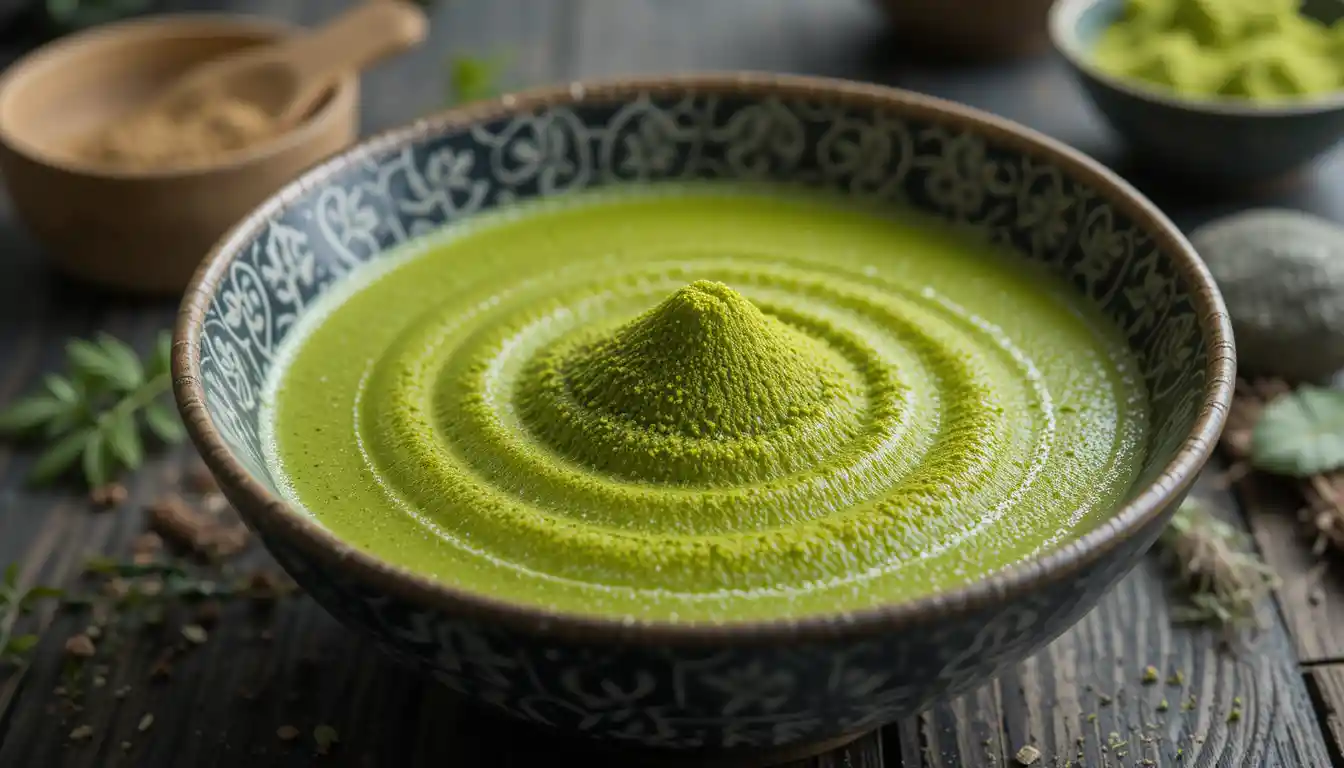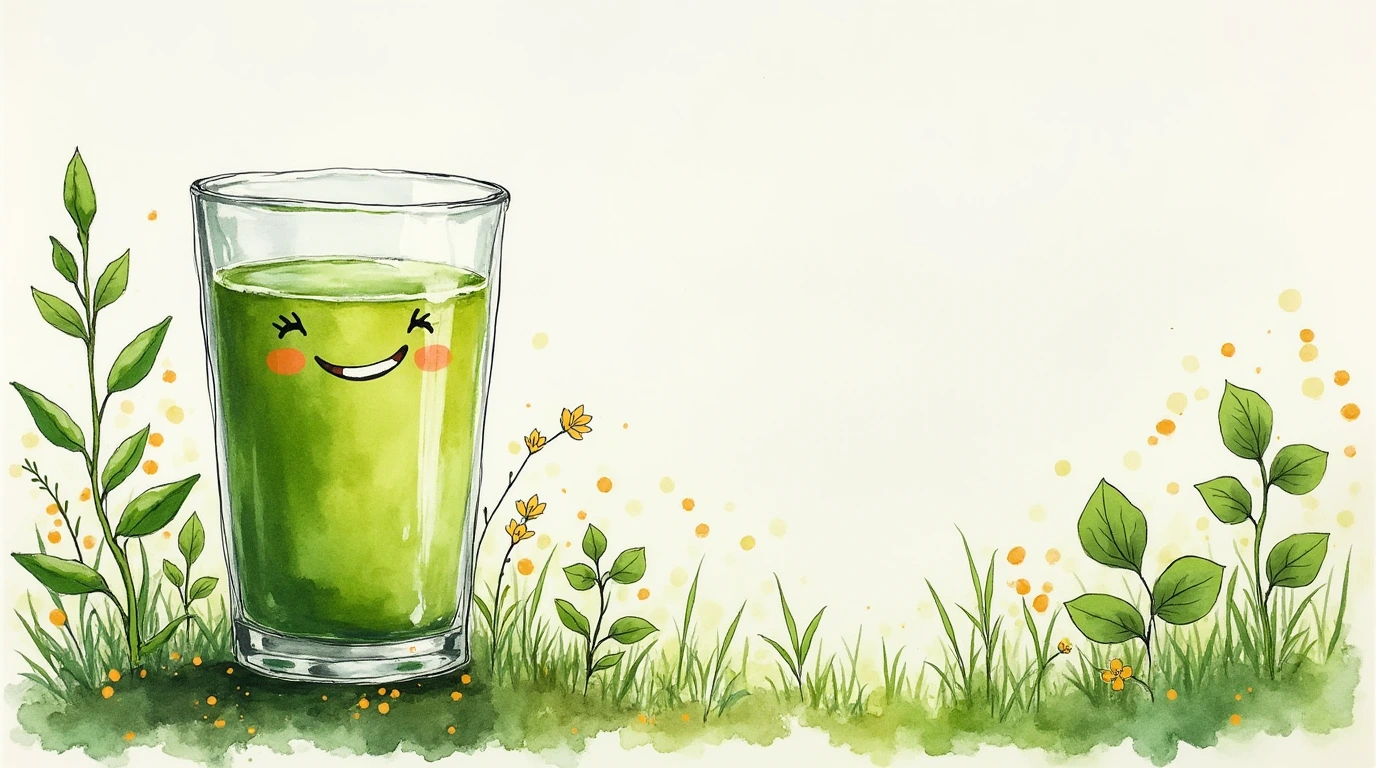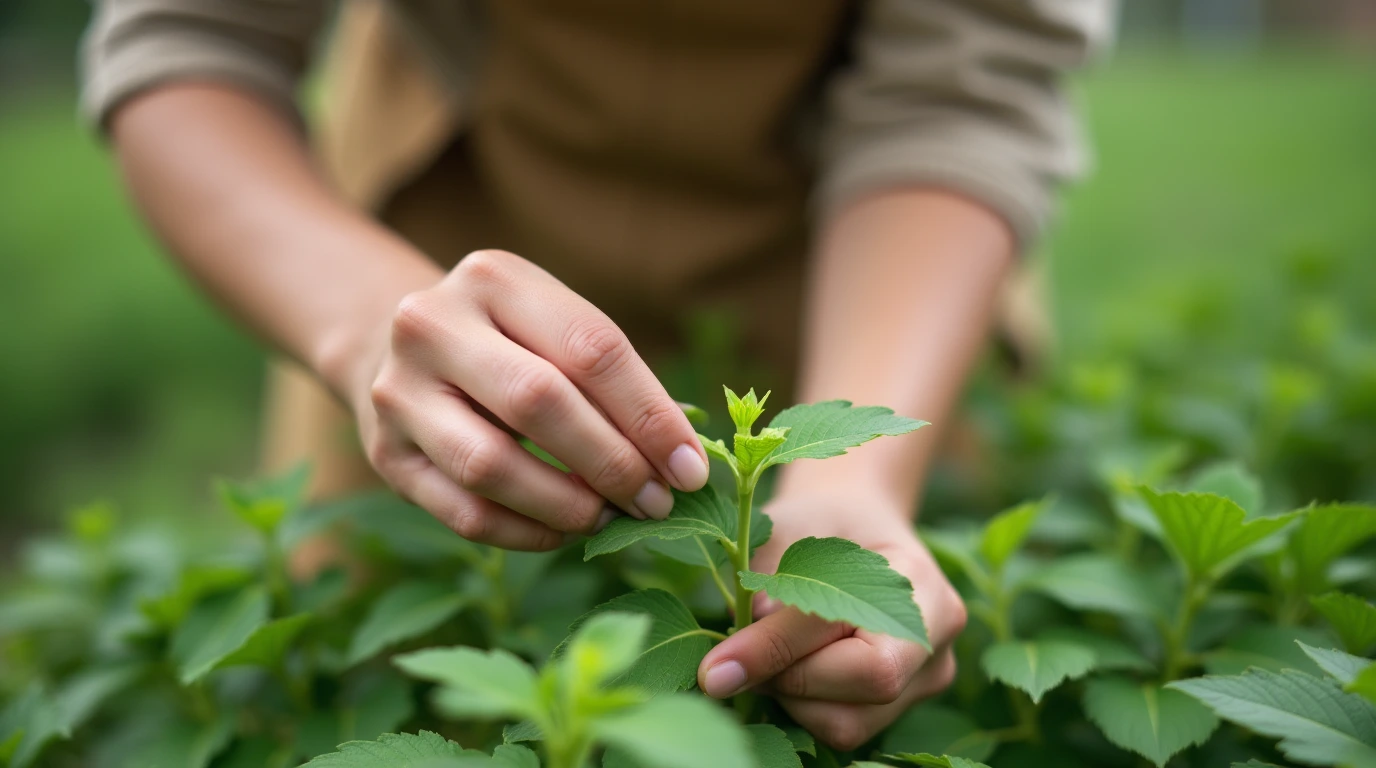Everything About Matcha: Finely ground and vibrantly green, matcha is more than just tea! 🌱 A true elixir of well-being, it boosts energy, enhances skin, and delights the taste buds. Rooted in Japanese tradition yet trending worldwide, discover why this magical powder is so popular! ✨
For a search on Matcha, this is where you’ll find the essentials. 🍵✨

1.Health Benefits of Matcha 💚
1.1 Why Is Matcha So Beneficial? ✨
Matcha is packed with health benefits for both body and mind. It’s rich in antioxidants (especially catechins), enhances focus, and supports metabolism. Its secret? A unique shade-growing process that preserves all its nutrients!
- Rich in antioxidants: Fights oxidative stress and maintains youthful skin.
- Sustained energy without jitters: L-theanine ensures a calm yet alert state.
- Natural detoxifier: High in chlorophyll to flush out toxins.
- Heart-friendly ❤️: Lowers bad cholesterol and promotes circulation.
1.2 Nutritional Value of Matcha 🍵
| Nutrient | Amount per 100g | Health Benefits |
|---|---|---|
| Antioxidants (EGCG) | ~137x more than regular green tea | Protects cells from aging |
| L-theanine | About 20 mg | Promotes relaxation and focus |
| Caffeine | Around 35 mg per cup | Provides sustained energy |
| Chlorophyll | High content | Helps detoxify the body |
| Fiber | 10.3 g | Aids digestion and regulates transit |
For more details on matcha, see the FoodData Central source.

2.Delicious Matcha Recipes 🍰
- Matcha Latte: A creamy and comforting drink.
- Energy-Boosting Matcha Smoothie: Perfect for mornings!
- Matcha and White Chocolate Cookies: A unique sweet treat. 🍪
- Marbled Matcha Cake: Beautiful and delicious.
- Matcha Pancakes: A colorful breakfast. 🥞
- Matcha Ice Cream: Refreshing with an umami twist. 🍦
- Matcha Tiramisu: A gourmet twist on the classic.
- Savory Matcha Sauce: Ideal for Japanese dishes. 🍛
- Matcha Porridge: A nutritious and tasty breakfast.
- Homemade Matcha Chocolates: A perfect gift. 🎁
- Matcha Cake (Japan): A fluffy and delicate dessert with a rich green tea flavor. 🍵🍰
3.Practical Tips About Matcha 🌿
3.1 How to Choose High-Quality Matcha? 🧐
- Vibrant green color: High-quality matcha is emerald green, never yellowish.
- Japanese origin: The best matcha comes from Uji or Nishio.
- Fine texture: It should be silky smooth, with no lumps.
- Beware of low prices: Good matcha typically costs between €20-40 per 100g.
3.2 Best Ways to Store Matcha ❄️
- Keep it in an airtight container, away from air and light.
- Store it in the fridge to maintain freshness.
- Avoid moisture, which can spoil the flavor.
3.3 How to Prepare Matcha Perfectly 🎋
- Heat water to 70-80°C (hotter makes it bitter).
- Sift the matcha to prevent clumps.
- Whisk with a chasen (bamboo whisk) in a W motion.
- Enjoy your matcha! 🍵

4.Best Ways to Enjoy Matcha 🍽️
Matcha can be enjoyed in many ways:
- Traditional: Whisked with hot water.
- Creamy Latte: Mixed with dairy or plant-based milk.
- Baking: Perfect for macarons, cakes, and madeleines.
- Savory dishes: Great for soups, sauces, and marinades.
5. Substitutes for Matcha 🌿
No matcha available? Try:
- Ground sencha tea (a milder alternative).
- Spirulina powder (for similar detox benefits).
- Moringa (nutrient-rich and bright green).
6. Fun Facts About Matcha 😄
- It takes one hour to grind just 30g of matcha! ⏳
- Samurai drank matcha before battles. ⚔️
- Buddhist monks rely on it for meditation. 🧘♀️
7. A Japanese Legend About Matcha 📖

Long ago, in the heart of ancient Japan, a young monk named Eisai set out on a perilous journey to China, driven by an insatiable thirst for wisdom. His path led him through misty mountains, vast tea plantations, and sacred temples where he sought enlightenment. One evening, as he rested in a monastery, he observed the local monks performing a peculiar ritual. They carefully ground emerald-green tea leaves into a fine powder, then whisked them into a vibrant jade elixir.
Intrigued, he sipped the mysterious drink—and felt an immediate sense of clarity and inner peace. His fatigue dissolved, replaced by a focused calm unlike anything he had experienced before. The monks explained that this powdered tea was not merely a beverage but a sacred elixir, a drink that sharpened the mind, revitalized the body, and deepened meditation.
Determined to share this discovery, Eisai returned to Japan, carrying the precious green powder with him. He refined its preparation, perfecting the ceremonial way of drinking matcha—not just as a source of energy, but as a practice of mindfulness. Soon, samurai warriors adopted matcha, drinking it before battle to enhance their focus and resilience. Scholars and poets, too, found inspiration in its soothing embrace, their words flowing effortlessly with each sip.
As centuries passed, matcha became an integral part of Japanese culture, symbolizing harmony, respect, and tranquility. The Japanese tea ceremony, or chanoyu, was born, transforming the simple act of drinking tea into an art—a moment of reflection, connection, and serenity.
Even today, every bowl of matcha carries the whispers of this ancient tradition, inviting us to pause, breathe, and savor the present moment. A sip of matcha is not just a drink—it is a journey through time, a ritual of balance, and a tribute to the wisdom of the past. 🍵✨
8.Origins and History of Matcha 🌏
8.1 Where Does Matcha Come From?
Matcha originated in China during the Tang Dynasty but was perfected in Japan.
8.2 Matcha’s History
Introduced to Japan in the 12th century, it became central to the traditional tea ceremony.
8.3 Characteristics of Matcha
- Taste: Earthy, umami, and slightly bitter.
- Texture: Ultra-fine and velvety powder.
- Types: Ceremonial-grade (premium) and culinary-grade matcha.
8.4 How to Grow Matcha? 🌱
Matcha comes from the Camellia sinensis tea plant, but its cultivation requires a precise and meticulous process to develop its unique flavor and health benefits. Unlike regular green tea, matcha plants are grown in the shade for about three to four weeks before harvest. This technique, called tana, reduces photosynthesis, increasing the production of chlorophyll and L-theanine, which gives matcha its vibrant green color and smooth, umami-rich taste.
Once the leaves are ready, only the youngest and most tender leaves at the top of the plant are handpicked, ensuring the highest quality. These leaves are then steamed immediately to stop oxidation, preserving their freshness and nutrients. After steaming, the leaves are carefully air-dried and deveined, removing stems and thick fibers to keep only the finest parts.
The final and most crucial step is stone grinding the dried leaves into a fine, silky powder. This process is incredibly slow—it can take up to one hour to grind just 30 grams of matcha! This patience ensures that the delicate flavors and nutrients remain intact, giving us the smooth, vibrant, and nutrient-packed matcha we love. 🍵💚

9.(FAQ) Everything About Matcha ❓
Can you drink matcha every day? 🍵
Yes, but in moderation! 1 to 2 cups per day are ideal for enjoying the benefits without excess caffeine.
Does matcha contain caffeine? ⚡
Yes! Matcha has about 35 mg of caffeine per serving, but thanks to L-theanine, it provides energy without jitters.
Is matcha better than coffee? ☕
It depends on your needs! Matcha releases energy gradually, while coffee gives a quick boost followed by a crash.
Can matcha help with weight loss? 🔥
Yes! It boosts metabolism and helps burn fat, especially when combined with a healthy diet.
Is matcha safe for children? 👶
Yes, but in small amounts. Opt for matcha milk instead of pure matcha to reduce caffeine intake.
What does matcha taste like? 😋
Matcha has an earthy, slightly sweet, umami taste with a hint of bitterness if prepared incorrectly.
How do you prepare matcha without lumps? 🥄
Always sift the matcha before adding water, and whisk it using a chasen (bamboo whisk) in a W motion.
Can matcha go bad? 🕰️
Yes! Over time, it loses flavor and nutrients. Keep it in an airtight container, away from heat and moisture.
What’s the difference between ceremonial and culinary matcha? 🍃
- Ceremonial-grade: High quality, smooth taste, best for drinking.
- Culinary-grade: Stronger taste, perfect for baking and lattes.
How can I use matcha in cooking? 🍪
Matcha is amazing in:
- Lattes & smoothies 🥤
- Cakes & cookies 🍪
- Ice cream & puddings 🍦
- Sauces & dressings 🥗
Is matcha good for the skin? ✨
Yes! Thanks to antioxidants, matcha helps fight acne, reduce redness, and give your skin a healthy glow.
Can I drink matcha at night? 🌙
It’s best to avoid it late in the evening as it contains caffeine, but some people find it relaxing thanks to L-theanine.
How is matcha different from green tea? 🍵 vs. ☕
Matcha is a powdered whole leaf, while green tea is infused. This means matcha contains more antioxidants and nutrients.
Can matcha help reduce stress? 🧘♀️
Yes! The L-theanine in matcha promotes relaxation while keeping you alert.
Does matcha have more antioxidants than blueberries? 🫐
Absolutely! Matcha contains more antioxidants than blueberries, making it a superfood powerhouse.
Can matcha stain your teeth? 😬
No, unlike coffee, matcha does not stain teeth and may even improve oral health thanks to its antibacterial properties.
How much matcha should I use per serving? ⚖️
For a standard cup: 1 to 2 grams (about ½ to 1 teaspoon) of matcha powder.
Can I mix matcha with other teas? 🍹
Yes! Try blending it with ginger tea, mint tea, or chai for unique flavors.
Can I drink matcha while pregnant? 🤰
In moderation, yes! But limit caffeine intake to about 200 mg per day and consult your doctor.
What’s the best way to store matcha? ❄️
Keep matcha in an airtight container, in the fridge, away from light and moisture to maintain its freshness.
Your Feedback Inspires Us, Share It!
There are no reviews yet. Be the first one to write one.

